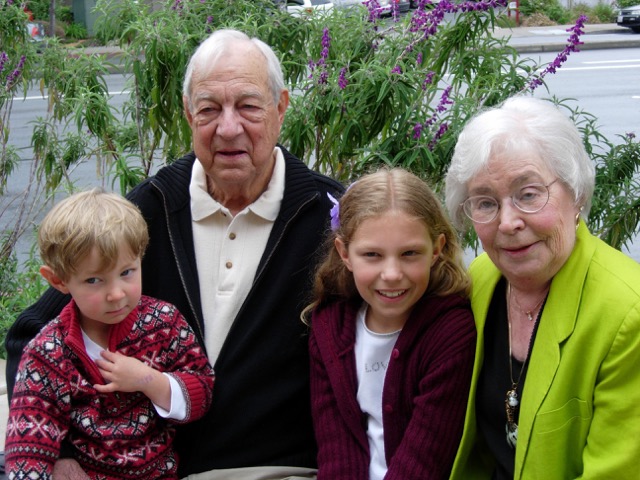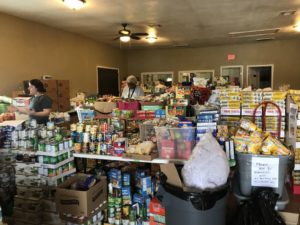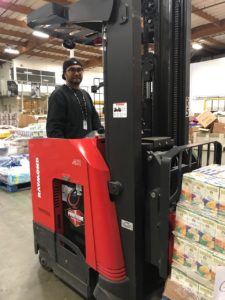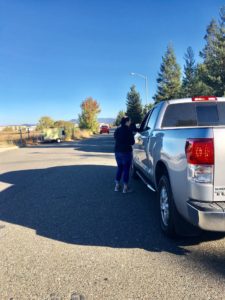It’s like clockwork. Every year, as the San Francisco-Marin Food Bank transitions out of summer and in to fall, the energy changes around here. It’s the countdown to the holidays – our busiest time of year. Some people call it our “Super Bowl.” And like the big game, this time of year brings out a lot of nerves, but also our best effort.
We’ve been nourishing our community for 30 years now, but it’s still wonderful to see the determination ramp up even higher as our drivers, pantry staff, and coordinators work extra hard to fight hunger when the stakes are highest.
But this time around it feels like there’s even more at stake. This holiday season, many of the already-struggling families we serve are now facing the possibility of changes to the federal Supplemental Nutrition Assistance Program (also known as SNAP or food stamps). The types of cuts to SNAP, being discussed by Congressional leaders, would cause mayhem for food banks around the nation. Many of our participants are also very anxious about the potential loss of healthcare coverage as threats to the Affordable Care Act continue.
Our region has also suffered through some of the most devastating wildfires in California’s recorded history. Thousands of people in the North Bay have been displaced from their homes, and desperately need help to get past the roughest stretch of their lives.
There is a rawness about the issues we face in 2017. But instead of cowering as this gigantic wall of adversity appears in our midst, we are doing the opposite. We are meeting the challenges with more verve than ever. We are mobilizing – and doing so with many partners – because we know we can’t do this alone.
The San Francisco-Marin Food Bank continues to be a voice for food safety-net programs in the halls of government in Washington, Sacramento, San Francisco and Marin Counties.
We are also extremely busy on the food side of things, assisting with disaster relief efforts – not just with the North Bay fires, but also in Houston, Texas following the massive destruction left behind by Hurricane Harvey. Numerous San Francisco-Marin Food Bank employees have traveled to both locations and put in long hours because it was the right thing to do.
At the same time, we’re keeping our eye on the prize by providing nutritious food every week to 30,000 families in San Francisco and Marin. We also continue to innovate, introducing new and exciting programs that are already expanding our reach, and helping to feed even more neighbors in need.
We’re feeding people like Heather Crossen, who starts her delivery-driver job before the sun comes up, then comes home to care of her two young children while her fiancé goes off to work two different jobs.
We’re helping seniors like Betty Ann Kirkpatrick, a 94-year-old widow who has outlived her husband by 35 years. She could never have done so without food assistance from her neighborhood pantry. As someone with a fixed income, she continues to live an active life with dignity because of the healthy food she receives every week.
This all brings us back to the here and now. The holiday season is upon us and with so much at stake already, the comfort and welcoming of a shared holiday meal for neighbors in need is going to mean even more. To me, it’s simply unthinkable for one of our neighbors to go hungry – especially at Thanksgiving – especially in a community as thriving as the Bay Area.
If you want to share the holiday spirit, here are three ways to help nonprofits that serve our community: consider a cash donation, sign up for a volunteer shift, or lend your voice as an advocate or ambassador for the cause. These are the best ways we know to make all our communities healthier and stronger.
Sincerely,
Paul Ash
Executive Director
San Francisco-Marin Food Bank






Share